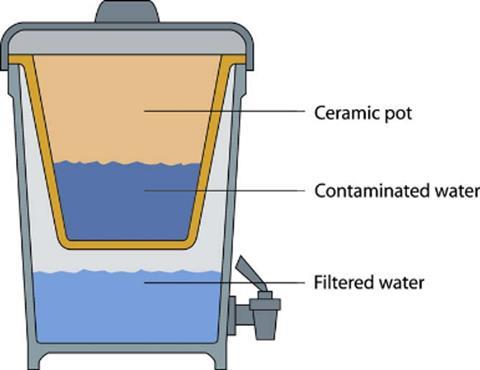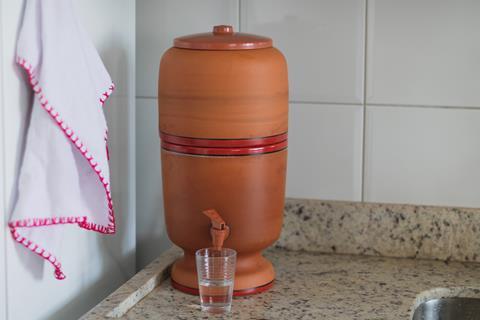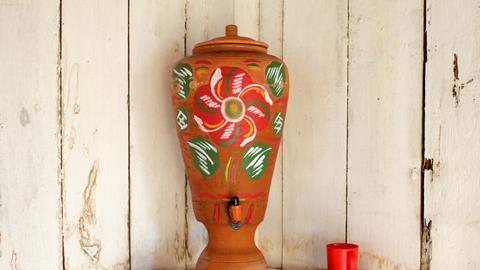Access to clean water is one of the most pressing challenges of the 21st century. According to the World Health Organization (WHO), more than two billion people worldwide lack access to safely managed drinking water, with rural and underdeveloped regions bearing the brunt of this crisis.
The global clean water crisis
Contaminated water is a major contributor to the spread of waterborne diseases such as cholera, dysentery, and typhoid, resulting in millions of deaths each year, particularly among children under the age of five. Climate change, population growth, and industrial pollution have further exacerbated the issue, making it clear that sustainable, cost-effective solutions are urgently needed.
While large-scale infrastructure projects such as water treatment plants and piped distribution networks are often promoted as the ultimate solution, they remain out of reach for many developing regions due to high costs, technical complexity, and the need for ongoing maintenance. As a result, low-technology, locally produced solutions like ceramic water filters have gained increasing attention for their effectiveness, affordability, and sustainability.
Challenges in clean water access
In many regions, clean water remains a scarce resource due to various environmental, economic, and infrastructural challenges. One of the primary barriers is the lack of reliable water sources. Many rural communities rely on rivers, lakes, and groundwater wells, which are often contaminated with bacteria, viruses, and chemical pollutants. Agricultural runoff, which contains fertilizers and pesticides, further contributes to water pollution, making it unsafe for human consumption. In coastal regions, saltwater intrusion into freshwater supplies presents another challenge, especially as climate change accelerates rising sea levels.
Another significant challenge is the burden placed on women and children in water-scarce regions. In many underdeveloped areas, women are primarily responsible for fetching water, often walking several kilometers each day to collect it from distant sources. This not only consumes valuable time but also exposes them to physical strain and safety risks. Additionally, when water sources are contaminated, families face increased risks of disease, further deepening cycles of poverty and health crises.
Addressing these challenges requires sustainable and practical solutions that do not rely on centralized infrastructure. Low-cost filtration technologies, such as ceramic water filters, have emerged as a viable alternative, offering an effective and accessible means of ensuring clean water for households in need.

Ceramic filters: a simple yet effective solution
Ceramic filtration is an ancient water purification method that has been refined with modern advancements. The concept of using porous materials to filter water dates back centuries, with various cultures utilizing unglazed pottery to store and purify drinking water. In Bali, for example, traditional “jempeng” water containers — made from porous volcanic stone — once played a similar role in filtering and storing water. While these traditional methods have largely disappeared, modern ceramic filters build on the same principles, using enhanced materials and designs to improve filtration efficiency.
Ceramic filters work by allowing water to pass through a porous structure while blocking contaminants such as bacteria, sediments, and protozoa. These filters are typically made by mixing clay with combustible materials such as sawdust or rice husks. When fired in a kiln, the combustible materials burn away, leaving behind microscopic pores that trap impurities. Additionally, some combustion materials produce charcoal residues, which enhance filtration by adsorbing contaminants.
Many modern filters incorporate silver nanoparticles, which provide additional antimicrobial properties, preventing bacterial growth within the filter itself. Some models also include activated carbon layers, which help remove organic contaminants, chlorine, and unpleasant odors. The simplicity of ceramic filtration makes it particularly suitable for rural and off-grid communities, as it requires no electricity and minimal user training.

Effectiveness and advantages of ceramic filters
The widespread adoption of ceramic filters is driven by their numerous advantages over other water treatment methods. These advantages include their ability to effectively remove bacteria, their affordability, sustainability, and ease of use.
Bacteria and pathogen removal
One of the most significant benefits of ceramic filters is their ability to remove harmful microorganisms from water. Studies have shown that ceramic filtration can remove up to 99% of bacteria, including common pathogens such as Escherichia coli and Salmonella. These bacteria are major culprits behind diarrheal diseases, which are a leading cause of childhood mortality in developing countries. The addition of silver nanoparticles further enhances the antimicrobial properties of ceramic filters, preventing the growth of bacteria on the filter surface and ensuring long-term effectiveness.

Affordability and accessibility
Compared to centralized water treatment systems, ceramic filters require a low initial investment and no electricity, making them an ideal solution for off-grid communities. Locally made ceramic filters can cost as little as $10-$30 per unit, making them accessible to low-income families. Their affordability ensures that even the most economically disadvantaged households can access safe drinking water without relying on expensive bottled water or chemical treatments.
Sustainability and environmental benefits
Ceramic filters are made from natural materials, reducing reliance on single-use plastics and chemical-based purification methods. Unlike disposable water treatment solutions such as chlorine tablets, ceramic filters can be reused for years with proper maintenance. This makes them an environmentally friendly alternative that minimizes waste while providing a long-term solution for clean water access.
Ease of use
Another key advantage of ceramic filters is their user-friendly design. Unlike complex water purification systems that require technical expertise to operate, ceramic filters require minimal user training. Their gravity-fed design allows them to function without electricity, making them ideal for remote and rural areas. With proper care and occasional cleaning, a ceramic filter can last up to five years, making it a practical and cost-effective choice for households.
Case studies and success stories
The effectiveness of ceramic filters has been demonstrated in numerous field studies and real-world applications. In Cambodia, organizations such as Resource Development International (RDI) have successfully distributed ceramic water filters to rural communities, significantly reducing the prevalence of waterborne diseases. Evaluations of these programs have shown that households using ceramic filters experienced a notable decline in diarrheal illnesses, particularly among children.
Similarly, in Kenya, non-governmental organizations have introduced ceramic filters in schools and households, providing a reliable source of clean water for communities lacking access to safe drinking water. These programs have not only improved public health outcomes but also reduced the financial burden associated with purchasing bottled water or boiling contaminated water using firewood or charcoal.
In Latin America, projects in Nicaragua and Guatemala have focused on training local artisans to produce ceramic filters using locally sourced materials. This approach not only ensures the availability of filters but also fosters economic opportunities for local communities. By empowering local businesses to manufacture and distribute filters, these initiatives create a sustainable supply chain that benefits both public health and economic development.

Conclusion
Ensuring universal access to clean water remains one of the most urgent global challenges, particularly for underdeveloped and rural regions. While large-scale infrastructure projects may provide long-term solutions, they are often expensive and difficult to implement in remote areas. Low-technology solutions such as ceramic filters offer a practical, affordable, and sustainable means of addressing water contamination and improving public health.
The simplicity, effectiveness, and accessibility of ceramic filters make them an invaluable tool in the fight against waterborne diseases. By leveraging traditional knowledge and modern innovations, ceramic filtration provides a low-cost yet highly effective solution for communities in need. As global efforts to improve water access continue, expanding the use of ceramic filters could play a crucial role in ensuring safe drinking water for millions worldwide.
Further reading:






No comments yet